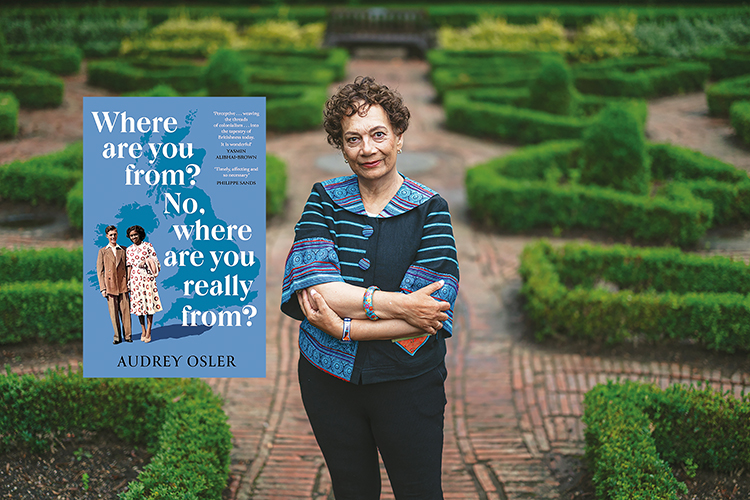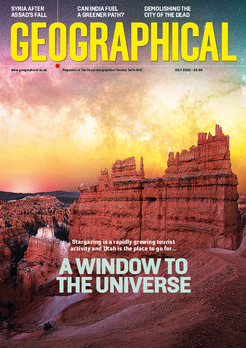
Audrey Osler reflects on her own heritage and the question that people of colour in the UK are all too familiar with
By
Audrey Osler, a professor of citizenship and human rights education at the University of Leeds, begins with two questions. The first is one we’re all sure to be asked many times in our life: ‘Where are you from?’ But the second, a follow-up – ‘Where are you really from?’ – is altogether different, reserved for those who are perceived to be other, to be from somewhere else. And while the first is usually innocuous, the second – whether asked aggressively or naively – can cause a high degree of pain.
Osler is British. Her father, Maurice Osler, was born and bred in Hertfordshire, while her mother, Esme Osler (nee Roberts), was Anglo-Indian, born in India before moving to Singapore as a young child. The pair met while Maurice was stationed in Singapore on peacetime National Service following the end of the Second World War. They later moved to Britain, where they married and had children. It’s a background apparently diverse enough to mark Osler as an outsider to some people in the UK. She details how her upbringing in the 1950s and ’60s was marked in some ways by this ignorance, and how to this day, her answer to the question ‘where are you from’ isn’t always accepted. ‘You can confidentially claim to be from Halifax or Highgate, Bristol or Brighton, but if you respond, “I’m from here,” often the questioner won’t be deflected or satisfied by your response,’ she writes. ‘They will persist: “No, where are you really from?”’
Reflecting on this reality – one experienced by many people of colour in the UK – Osler decided to undertake a journey of discovery. ‘Because the questions are so potent and because they come from – to be generous – a place of profound ignorance about the British Empire and its past colonising, I decided to take those two freighted questions… and ask them of myself,’ she writes. What follows is part personal family history and part history of the British Empire as far as it relates to the countries experienced by Osler’s family members – namely India and Singapore.
Osler is unflinching in her examination of the Empire and its impact on her family. Among the stories she tells are those of her three-times great grandfather, forced as a young Tamil boy to flee his home after his parents were killed and their village destroyed as a result of a struggle between the British East India Company and local Indian rulers. His story is remarkable and shocking. Forced into slavery on board a British ship, he later earns his freedom and purses an inspiring and highly unusual religious life. His story reveals many of the dark aspects of British action in India, including the fact that a form of slavery was practised – something largely forgotten, with the focus more often on the trans-Atlantic slave trade (if slavery is focused on at all).
Other oft-forgotten details also emerge by dint of Osler’s Anglo-Indian heritage. As she explains, in the late 19th and early 20th centuries, in both employment and social life, Anglo-Indians living in India found themselves in an odd, liminal position. Trusted by the British to be employed in certain roles more than ‘native’ Indians, they still encountered race-based policies, prejudice and judgmental attitudes. Deeming it best to separate and anglicise these people as much as possible, they were, as a result, often distrusted by and alienated from other Indian communities.
Osler details the particularly disturbing story of the Bengal Military Orphan Society, which, from the late 18th century, paid enlisted men who had Anglo-Indian children a government subsidy for each child. When the child reached the age of three, the soldier had to pay back the money or give the child over to an orphanage. Although theoretically voluntary, this system became a way of separating mixed-heritage children from their parents, particularly their Anglo-Indian mothers, ‘ensuring they were brought up as Christian and as useful if second-class members of society’. As Osler notes, it was clearly a forerunner of policies later enacted in Australia with the children of Indigenous people – the so-called Stolen Generations.
Despite these details, Osler’s story is often a hopeful and happy one, including people who crossed boundaries, refused to be cowed by racism and married for love. More than anything, it reveals just how integrated the Britain of today is with Empire. Osler’s story feeds into the wider discussion taking place in British society today about the Empire – the way we remember it and teach it; what we do with the wealth and objects obtained from it; whether we commemorate its pioneers or remove them from our streets and galleries. Combined with these wider discussions, her personal history is vital, revealing the lived reality, for one family at least, of Empire, in a way that facts and figures can’t. We’re all touched by the British Empire and its legacy and as Osler reveals, mixed-heritage people have always lived in Britain. ‘Migration and mixedness are the norm,’ she writes, ‘and have long been so.’ It’s a timely and moving reminder.




